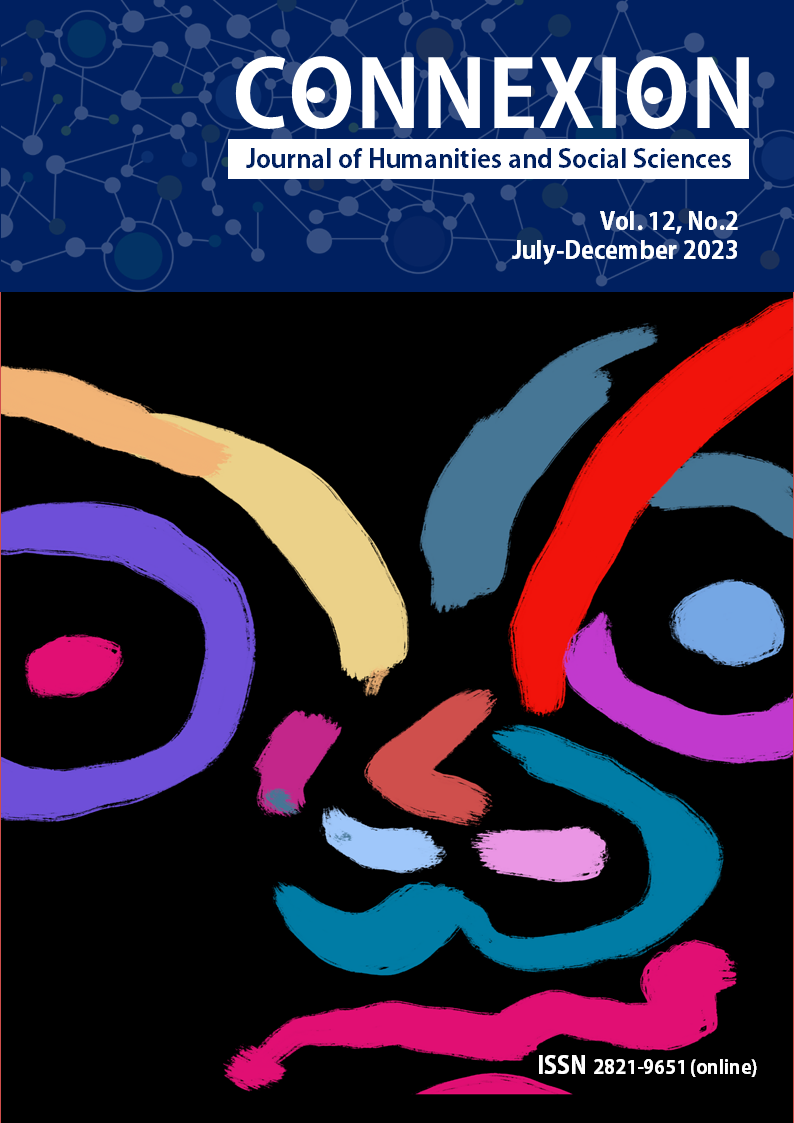The Incorporation and Resistance of the Danmei Subculture
Main Article Content
Abstract
The Danmei subculture, emerging from Chinese fandom culture and influenced by Japanese Yaoi culture, centers around male-male romantic and/or sexual relationships in fictional narratives across various media. This research article explores the incorporation and resistance of the Danmei subculture within popular culture, with a focus on the internet’s role as a facilitator. The study employs participatory observation and interactive engagement with 121 female Danmei fans to examine ideological and commercial incorporation, as well as the subculture's impact on gender norms and power dynamics. The findings reveal how Danmei challenges traditional gender and societal norms, fosters inclusivity and acceptance, critiques power imbalances, and promotes participatory culture. The commercial incorporation of Danmei has led to increased visibility but also raises concerns about commodification and cultural authenticity. The research contributes to a better understanding of subcultural dynamics and the significance of female Danmei fans’ experiences in shaping contemporary popular culture.
Article Details

This work is licensed under a Creative Commons Attribution-NonCommercial-NoDerivatives 4.0 International License.
Copyright
Connexion: Journal of Humanities and Social Sciences has an exclusive right to publish the accepted articles in any form. However, the author retains the following rights:
1. The right to the ownership of the article;
2. The right to use all or part of the article in his/her other works;
3. The right to re-produce the article for personal use or for use in the author’s organisation, in which case the author must obtain permission from Connexion: Journal of Humanities and Social Sciences;
4. The right to make copies of all or part of the work for educational use or for the author’s use in classroom teaching; and
5. The right to include the work (both the preprinted and printed versions) in an institutional repository.
References
Bennett, A. (1999) Subcultures or neo-tribes? Rethinking the relationship between youth, style and musical taste, Sociology, vol. 33, no. 3, pp. 599-617. https://doi.org/10.1177/S0038038599000
Beynon, J. (2002) Masculinities and culture, London: Open University Press.
Chan, J. (2019) 6 times The Untamed was like, “Censorship who?” and gave the gays their rights, Available: https://www.pulp-usu.com/pop/2019/11/15/6-times-the-untamed-was-like-censorship-who-and-gave-the-gays-their-rights [Retrieved 12 June 2023]
Cohen, S. (2002) Folk devils and moral panics: The creation of the mods and rockers, London: Routledge.
Hall, S., & Jefferson, T. (1991) Resistance through rituals: Youth subcultures in post-war Britain, London: Routledge.
Hebdige, D. (2004) Subculture: The meaning of style, Istanbul, Turkey: Babil Yayinlari.
Hine, C. (2000) Virtual ethnography, London: SAGE.
In the 2021 drama competition, which one of “Hao Yi Xing”, “Sha Po Lang” and “Zhang Gongan” will be the new “top-notch”? (2021年耽改剧大厮杀,《皓衣行》《杀破狼》《张公案》哪部会出新“顶流”?). (2020) Available: https://zhuanlan.zhihu.com/p/336452007 [Retrieved 12 June 2023] (in Chinese)
Lavin, M., Yang, L., & Zhao, J. J. (Eds.). (2018) Boys' love, cosplay, and androgynous idols, Hong Kong: Hong Kong University Press. https://doi.org/10.5790/hongkong/9789888390809.001.0001
McRobbie, A. (2000) ‘Jackie and just seventeen: Girls’ comics and magazines in the 1980s,’ in Feminism and youth culture: From Jackie and just seventeen, pp. 135-188, London: Red Globe Press. https://doi.org/10.1007/978-1-349-21168-5
Ng, K. M. (2019) ‘Boys’ love fandom and the transnationality of desire in China’, in K. M. Ng & R. Y. T. Kwan (eds.), Boys’ love, cosplay, and androgynous idols: Queer fan cultures in mainland China, Hong Kong, and Taiwan, pp. 1-21, Hong Kong: Hong Kong University Press. https://doi.org/10.2307/j.ctt1rfzz65
Thornton, S. (1995) Club cultures: Music, media, and subcultural capital, Cambridge, UK: Polity Press.
Wald, G. (2004) Feminism and youth culture. By Angela McRobbie, 2nd edition, New York: Routledge, 2000. Her way: Young women remake the sexual revolution. By Paula Kamen, New York: New York University Press, 2000, Signs: Journal of Women in Culture and Society, vol. 29, no. 4, pp. 1144-1149. https://doi.org/10.1086/382636


